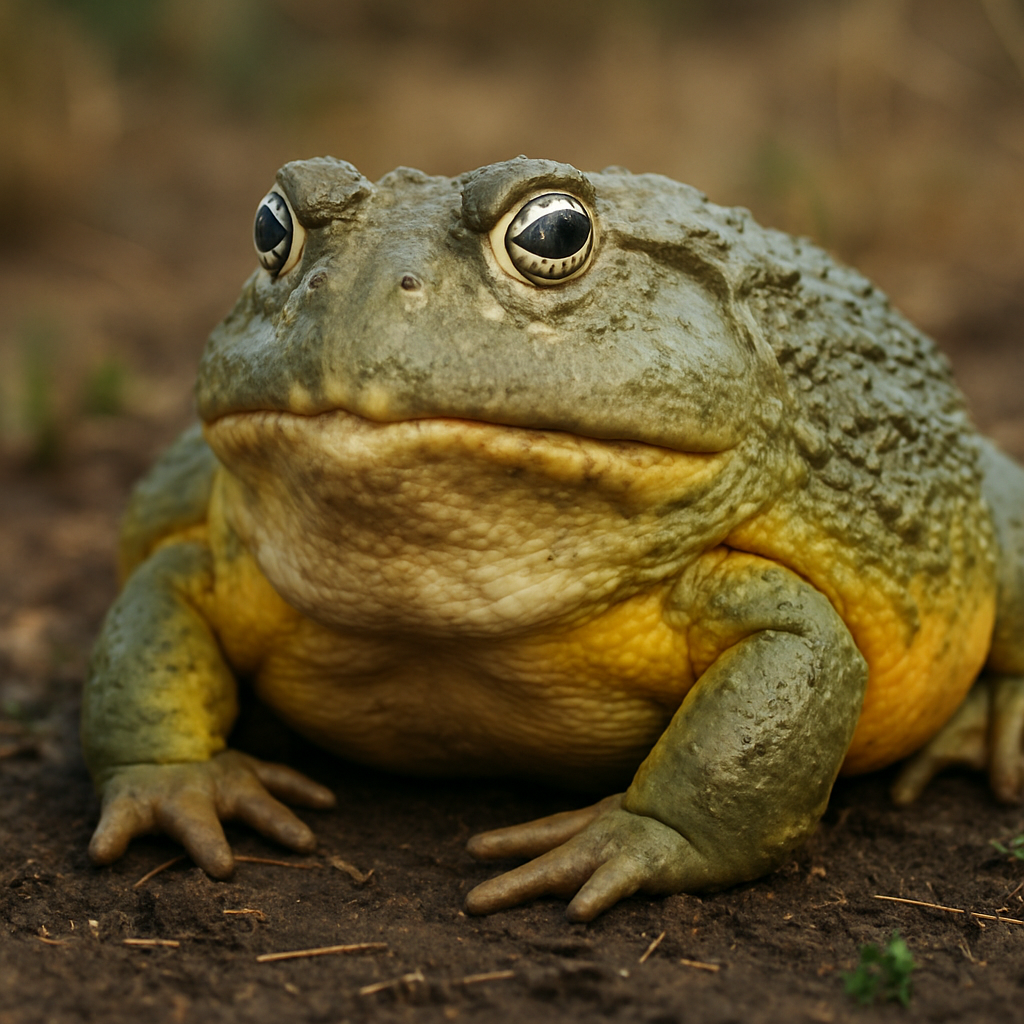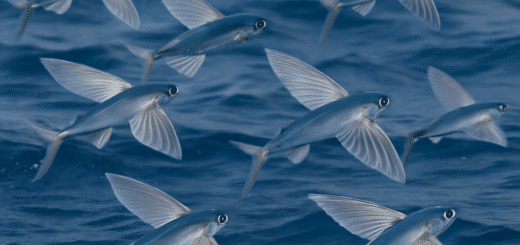African Bullfrog: The Ferocious Giant of the African Wetlands
Introduction: Meet the African Bullfrog
The African Bullfrog (Pyxicephalus adspersus) is not your average frog. Known for its massive size, powerful bite, and surprising parental instincts, this amphibian has earned its place as one of the most remarkable creatures in the animal kingdom. Native to sub-Saharan Africa, the African Bullfrog thrives in seasonal environments where survival requires toughness, patience, and strength.

Physical Characteristics
- Size: Adult males can grow up to 9 inches (23 cm) and weigh over 2 kilograms (4.4 lbs), making them among the largest frog species in the world.
- Color: Typically olive green or brownish with a lighter underbelly; males often have a yellow or orange throat.
- Lifespan: Can live up to 35 years in captivity and around 20 years in the wild.
Habitat and Distribution
African Bullfrogs are found in savannas, grasslands, and semi-arid regions across countries like South Africa, Angola, Botswana, and Zimbabwe. During the dry season, they burrow underground and enter a state of dormancy (aestivation) to survive extreme heat and dehydration.
Diet: Carnivorous and Fearless
The African Bullfrog is a voracious carnivore. Its diet includes:
- Insects
- Small rodents
- Birds
- Reptiles
- Other frogs — even its own kind!
With a wide mouth and sharp tooth-like structures called odontodes, it can overpower prey almost its own size. Its aggressive feeding behavior has earned it a reputation as one of the most fearless frogs in the world.
Reproduction and Parental Care
One of the most fascinating aspects of the African Bullfrog is its unexpected parenting behavior. During the rainy season, males gather in temporary pools and engage in loud calls and physical combat to attract females.
- Females can lay up to 4,000 eggs at once.
- The male guards the eggs and later the tadpoles.
- If the water level drops, the male will dig channels to connect pools, ensuring the survival of his offspring.
This level of paternal care is rare among amphibians, making the African Bullfrog truly unique.
Defense and Behavior
Don’t let its sluggish appearance fool you. The African Bullfrog can:
- Inflate its body to appear larger.
- Deliver a painful bite when threatened.
- Emit loud croaks and even charge at predators, including humans.
These defense mechanisms help deter natural enemies like birds, snakes, and mammals.
Conservation Status
Currently, the African Bullfrog is not endangered, but habitat destruction, pollution, and illegal pet trade could threaten local populations in the future. Responsible environmental management is essential to protect this iconic species.
Fun Facts
- The African Bullfrog is also known as the “Pixie Frog,” a name derived from its scientific genus, Pyxicephalus.
- Despite their aggressive nature, they are popular in the exotic pet trade — but only for experienced keepers.
- They can survive months without water by forming a tough skin cocoon underground.
Conclusion: A True Amphibian Warrior
The African Bullfrog is a remarkable amphibian that combines strength, intelligence, and resilience. Its unique traits — from paternal care to aggressive hunting — make it a standout species in the animal world. Whether you’re a nature enthusiast, herpetologist, or curious reader, the African Bullfrog is an unforgettable example of nature’s raw power and adaptability.








